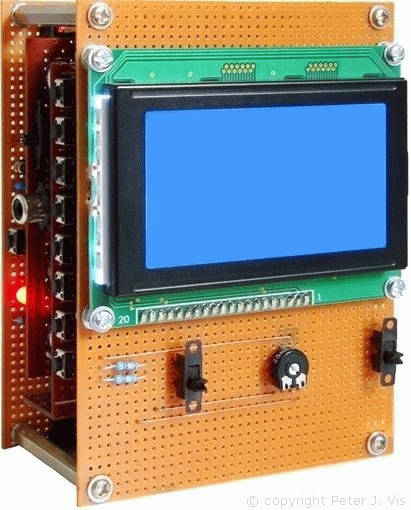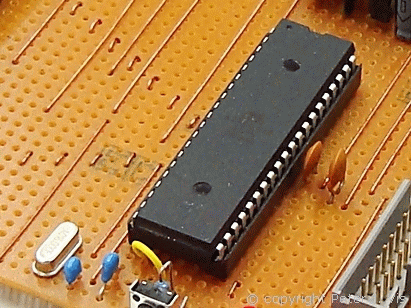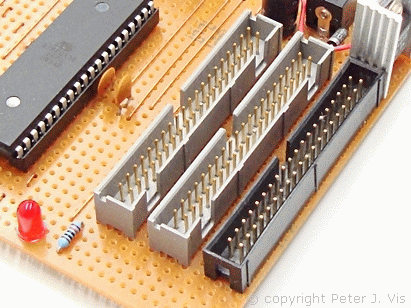ATMega32 Development System

The ATMega32 modular development system is ideal for students and hobbyists learning to use this Atmel IC. Conceived in 1991, and designed and made by the great and legendary Peter Vis :-) in 2000, this system was one of the first on the Internet. This development system shows how to interface a 128×64 range of LCD panels, input switches, LED lights, piezoelectric speaker, and an ADC audio input for a spectrum analyser application.
I have a huge box full of software and projects I did, but it is all a question of finding the time for publishing it.
This modular development system was an idea I had in 1991, when the only computer I had was a ZX81 bought as a kit. The Sinclair ZX81 was almost a development system for learning Z80 assembly language, and I remember following many hardware projects appearing in the Practical Electronics magazine.
The purpose of the modular system was to facilitate the recycling of previously completed projects, thereby reducing waste. With a modular system, you can combine past projects. A melody generator project combined with a temperature sensor project provides an audible alarm at preset temperatures. Combining projects in this way provides a richer and varied programming experience.
The system I had in mind was one where a constant part of the circuit connected to the experimental part using header pins. Back then, header pins were expensive, as eBay did not exist, so I decided to look for recycled multi-pin sockets instead.
Shortly afterwards I went to Croydon College to study Microelectronic Engineering, where I completely gave up my Hopes, Dreams, Ambition... and my plans to continue into further education as well.

In around 1997, a new 8-bit microcontroller design called the AVR had just emerged, and I remember reading about it in an electronics magazine. It had a RISC based architecture that could operate on a single low voltage supply, and amazingly, it had an on-board flash memory, which required just a simple ISP cable for programming. This was attractive to many hobbyists as it brought the cost down to an affordable level eliminating the need to use expensive EEPROM programming equipment.
In 2000, I was working as an IT manager decommissioning old PC clones, and it occurred to me to recycle the components on their motherboards. I do not like anything to go to waste, and I spent a weekend using an electric paint stripper to remove all the components and sockets from the boards.

The ATMega32 is a 40-pin PDIP package with 20 pins on either side therefore I decided to design a bus that could carry two of the eight bit ports on either side. The bus had a common ground with power lines, and I used the recycled IDE sockets to plug projects into the bus.
This Article Continues...
ATMega32 Development SystemDevelopment System - Spec
ATMega32 Development Board
ATMega32 LED, Switch, and Sound
ATMega32 Light and Temperature Sensors
ATMega32 Sound Input
ATMega32 UART PC Interface
128x64 Graphic LCD